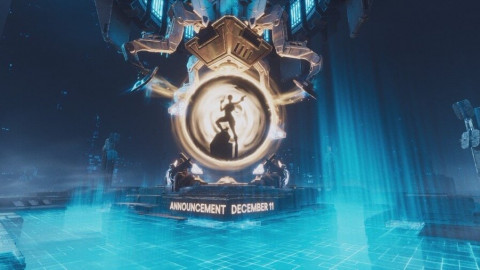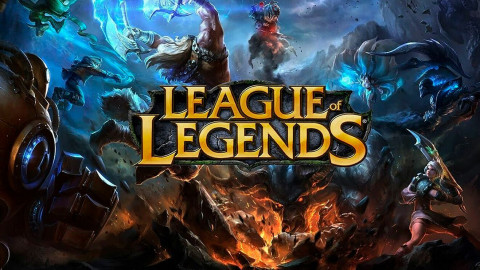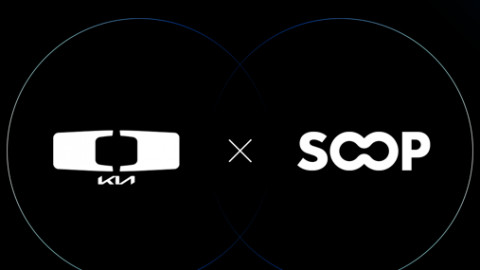
It's Super Smash Bros. Melee's 20th anniversary and the title is still going strong as a competitive fighting game. It sounds strange to say about a game so old, but it's definitely the perfect time to get into the game if you haven't already. The competitive scene is changing, with a lot of new, relatively unknown players challenging the Five Gods.
So how do you start such a technical game?
In Super Smash Bros. Melee, most competitively-minded players can quickly discern whether or not their opponent is well versed in the game. There are obvious signs of a novice, like slow movement or lack of DI, but there are less obvious ones as well. The more subtle parts of what makes someone good at a fighting game are what many players refer to as fundamentals.
The concept of fighting game fundamentals doesn't have one set definition, but it is chiefly concerned with experienced decision-making and awareness of what the opponent is trying to do.

For example, knowing when to jump is a fundamental skill that makes you a better Street Fighter player. Jumping is usually the riskiest option in Street Fighter, but doing so successfully can lead to high damage counter attacks. On the contrary, frequent risky jumps that lead to little damage are a common bad habit for novice players. The risk/reward balance between jumping is a design element of Street Fighter that rarely changes, allowing experienced players with strong fundamentals to see a variety of competitive success across titles.
This guide's aim is to provide a starting place for those interested in improving upon the base of their Melee skill. Regardless of your character choice, steady work on improving these aspects of your gameplay elements will make you a better Melee player.
The Fundamentals of Melee
Each character has a wide variety of different offensive and defensive movement options and specific match-up tech. In fact, the technical depth in Melee is so deep that the majority of competitive players — regardless of how many years they have spent playing Melee — will have only one main character they compete with. On rare occasions, competitors may reveal a second, usually less polished, character than their main.
However, longtime players with professionally honed Melee fundamentals can easily defeat the average player with any character, regardless of tier. This is possible because the fundamentals of Melee are the same for Fox and Marth as they are for Kirby and Bowser. Once you master enough fundamental Melee skills, wins are decided less by the tier list and more by consistently outperforming your opponent in the same four-five fundamental ways.
Here are some of those fundamental Melee skills.
The movement mix up
Movement mix-ups define Melee's fast pace and expressive gameplay. It can be as simple as dash dancing back and forth or as advanced as what Ice's Fox once pulled over against Armada's Peach.
Ice dancing around Armada's shield is impressive and a purposeful attempt to bait a reaction and it works beautifully. Every character in Melee can do things like this, but Fox's speed elevates the mix-up to top-tier lethality.
Another common movement involves platforms. Any character can jump on a platform and represent 3 movement options – they can drop below it, stay on the platform, or jump off. This makes it possible to mix up your opponent effectively relatively safely. A player has a good fundamental platform mixup experience, they will be able to play all characters more effectively.
Identifying neutral
In competitive Melee, there is a state of being called "neutral" in where neither player has a particular advantage and both are free to act. Identifying when you are in this state is a crucial component of high-level Melee and skilled players are quick to notice when their opponent has "no neutral."
In the clip above, Axe easily predicts the opponent's movement and punishes. This type of prediction and execution is made possible thanks to Axe's keen sense of neutrality that follows him regardless of the character he plays.
Players with poor neutral usually commit to unsafe options vulnerable to counterattack. The poor neutral game can make defeating a patient opponent feel impossible, as players find themselves in constant states of disadvantage without fully understanding how they got there in the first place.
Tech chasing
Whenever you land a knockdown in Melee, you have a big advantage. The opponent's movements become limited to a handful of telegraphed options and, with enough practice, players can punish consistently either by identifying early animation frames or with a calculated guess.
One simple tip is to look for the green impact color splash when an opponent hits the ground. The moment you see it, you know your opponent has missed a tech and is vulnerable to follow-up.
Every character benefits from tech chasing and some have a large part of their competitive gameplay defined by how effectively they chase. The first step in developing the skills is to simply notice what option your opponent chooses when they are knocked down.
If you can develop the presence of mind to recognize when an opponent is about to be knocked down (many characters use down grab to set this up), dozens of mix-ups and potential KO scenarios become available.
Recovering from getting knocked off the stage
Recovery is different for each character in Melee, but the fundamentals of making it back on the stage remain the same. The goal is to avoid being predictable while negating the opponent's ability to secure the KO. As a result, Melee players with strong recovery fundamentals know dozens of ways to make it back to the stage and make it as difficult as possible to secure a kill.
Players with strong recovery fundamentals appear to push their character's survival ability to the brim. These types of players are comfortable when off stage and can use their superior aerial control to make even disadvantaged off-stage scenarios risky for less aerial savvy opponents.
Edge guarding
One of the biggest technical hurdles of getting good at Melee is getting consistent at edge guard techniques and tactics. A ledge is a dangerous place for new players, especially when facing a veteran who confidently executes low percent gimps and invulnerable get-up options in unpredictable ways.
Part of good edgeguarding is hitting the opponent before they are able to reach the ledge and benefit from its advantages. In the clip below, EddyMexico demonstrates textbook edge guarding prowess by methodically covering Fox's options after they commit early to an up B recovery.
EddyMexico wave dashes backward after throwing a fireball: doing this covers any horizontal side B recovery from his opponent while also giving Luigi the space needed to react if the fireball doesn't connect in time. As Fox attempts to recover again, Luigi still has the ledge secured with a whiffed down air followed by jabs: This covers multiple Fox up B angles and leads to an easy off-stage KO.
In this case, Fox was doomed the moment they wasted their double jump into an unnecessary early upb. Against a player with professional edgeguarding fundamentals, that recovery option is just too predictable.
The first step of improving your fundamentals at Melee is being aware they exist, so congratulations on making it this far. To improve your own fundamentals, try tuning into any pro Melee stream or tournament and take special notice of whenever one player gets combo'ed heavily or KO'd. The more you begin to notice the small details of good Melee, the easier it becomes to notice opportunities in your own gameplay to incorporate similar tactics.
-

Warcraft 3 is my one true love and I will challenge anyone to a game of Super Smash Brothers Melee.
Sort by:
Comments :0





